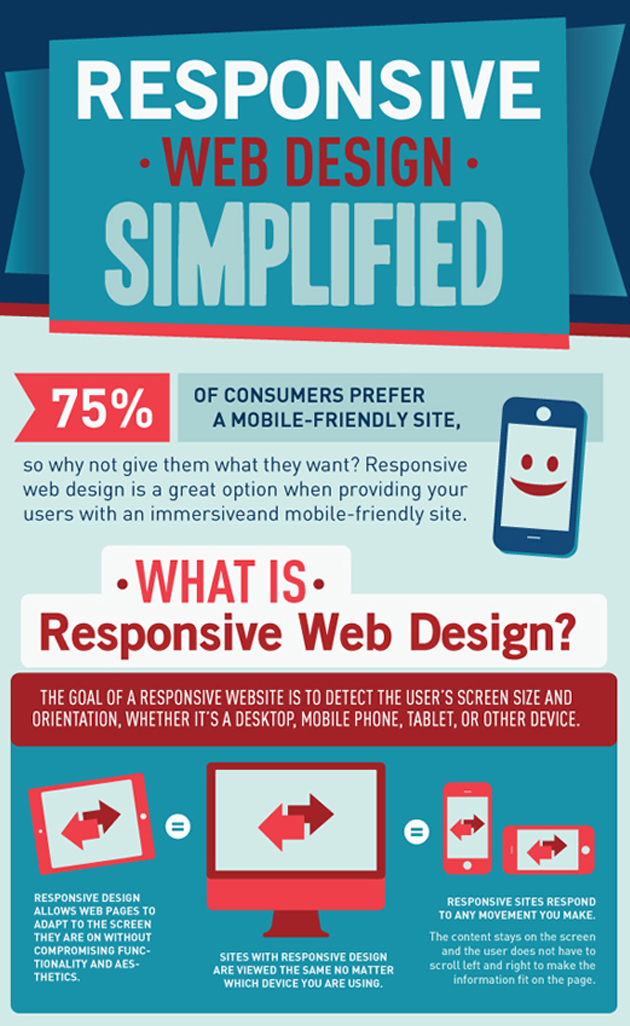Prepare To Journey Through Time And Uncover Exactly How Sites Have Come To Be Extra Innovative, Straightforward, And Visually Spectacular
Prepare To Journey Through Time And Uncover Exactly How Sites Have Come To Be Extra Innovative, Straightforward, And Visually Spectacular
Blog Article
Author-Rasmussen Dalby
In the past, websites were straightforward and concentrated on information. Navigating was straight, and design was for desktops. Currently, user experience is vital. Information overviews designs for simple navigating. Receptive formats fit various gadgets. Today, dark mode decreases strain, and minimal menus enhance navigating. Interactive attributes engage customers, and strong visuals stand out. AI integration enhances involvement. See just how style has evolved to improve your online journey.
Very Early Days of Web Design
In the early days of web design, simplicity reigned supreme. Internet sites were standard, with restricted shades, fonts, and designs. The focus got on supplying information as opposed to showy visuals. Customers accessed the net with sluggish dial-up connections, so speed and capability were essential.
Navigation menus were straightforward, normally located at the top or side of the page. Internet sites were created for computer, as mobile browsing had not been yet prevalent. Web content was king, and developers focused on simple readability over complex design components.
HTML was the main coding language utilized, and designers had to function within its restraints. Animations and interactive attributes were marginal compared to today's requirements. Internet sites were fixed, with little dynamic content or personalized individual experiences.
Surge of User-Focused Style
With the advancement of web site design, a shift towards user-focused style concepts has come to be progressively noticeable. Today, producing internet sites that focus on user experience is essential for engaging site visitors and achieving business goals. User-focused design includes understanding the requirements, choices, and actions of your target audience to tailor the site's design, web content, and features as necessary.
Developers currently perform extensive research, such as user studies and use screening, to gather understandings and responses straight from customers. This data-driven approach assists in creating user-friendly navigating, clear calls-to-action, and aesthetically enticing interfaces that reverberate with site visitors. By placing the individual at the facility of the layout procedure, sites can supply a much more personalized and delightful experience.
Receptive style has actually also emerged as a crucial aspect of user-focused design, ensuring that web sites are maximized for different devices and display sizes. This flexibility boosts accessibility and use, accommodating the diverse methods individuals interact with web sites today. Fundamentally, the surge of user-focused style indicates a shift in the direction of creating electronic experiences that focus on the requirements and assumptions of the end customer.
Modern Trends in Website Design
Check out the most up to date trends forming website design today. One noticeable pattern is dark mode design, providing a smooth and contemporary appearance while minimizing eye stress in low-light atmospheres. Another key pattern is minimalist navigating, simplifying menus and improving individual experience by concentrating on essential elements. Incorporating micro-interactions, such as computer animated buttons or scrolling results, can create a much more appealing and interactive internet site. Receptive style remains vital, making certain seamless user experiences across different gadgets. Additionally, using strong typography and unbalanced designs can include visual passion and draw attention to particular material.
Incorporating AI modern technology, like chatbots for consumer support or customized referrals, enhances customer involvement and simplifies procedures. https://www.ratchetandwrench.com/articles/12591-smart-social-keeps-the-car-count-climbing has likewise come to be a significant pattern, with developers prioritizing inclusive design methods to cater to varied customer requirements. Welcoming sustainability by enhancing web site performance for rate and effectiveness is another emerging pattern in website design. Collaborating with individual responses and information analytics to repeat and improve layout continuously is essential for staying relevant in the ever-evolving digital landscape. By embracing these modern-day fads, you can produce a visually appealing, user-friendly site that reverberates with your target market.
Final thought
As you reflect on the development of web site layout from the early days to currently, you can see how user-focused design has become the driving pressure behind modern fads.
Embrace the trip of modification and adjustment in web design, constantly maintaining the customer experience at the center.
Keep present with the most recent trends and modern technologies, and never ever stop evolving your approach to create aesthetically sensational and user-friendly websites.
Develop, adapt, and develop - the future of website design remains in your hands.
